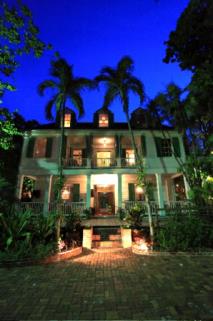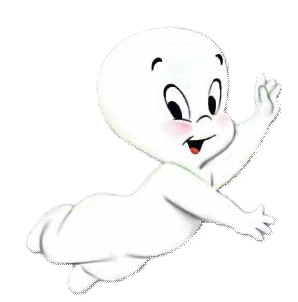

Audubon House and Gardens
The 19th-century estate called the Audubon House which is located at 205 Whitehead Street in Key West was built by Captain John H. Geiger who was a harbor pilot and master wrecker. A "wrecker" was someone who made a living from recovering the bounty found on shipwrecks, which were quite common in this day because of the dangerous, razor-sharp reefs and the immense storms off the Key West coast. As a rule, the wreckers would receive 25% of what they could salvage and it was lucrative work. In fact, before the advent of lighthouses and horns to alert sea captains to the inherent dangers of its coastline, Key West in the 1830's and 40's was considered the richest city per capita in the entire country. Such was the extent of the wreckage claimed by its shores. Captain Geiger was so adept at navigation, that he was hired to steer many ships through the treacherous reefs. Between 1835 and 1876 his name was mentioned in fifty-seven wrecking court case. Historians believe that Geiger moved to Key West sometime in the 1820s. In 1829 Gieger married Lucretia Sanders from the Bahamas. Together they had twelve children and later built the home with his riches from being a master wrecker.
Captain Geiger also dabbled in another line of work before this that was known only to his immediate family... "piracy". This fact led to widely circulated speculation that he may have buried a part of his vast fortune somewhere on his property, a rumor that remains to this day. Captain Geiger died in 1885 and the mansion remained in the family until his last direct descendant, Captain Willie Smith, who also a ship captain passed away in 1956. Smith was a rather eccentric person and a recluse by all accounts. His disdain for human contact extended to the point where he would lower a basket from a second floor window that would be filled with food by someone he made a previous arrangement with.
The home was scheduled to be demolished in 1958 but was spared this fate by the Mitchell Wolfson Family Foundation, a non-profit educational institution. This was to become the first of many restoration projects in Key West and still stands today as the gold-standard of renovation endeavors, and is still considered the gem of the island's restoration movement.
The house was then renamed after the renowned ornithologist and painter John James Audubon, a visitor to Key West and the Dry Tortugas in 1832. While in the Florida Keys, Audubon slept aboard the revenue cutter, Marion. Historians are fairly certain Audubon never stayed in the Geiger home due to the fact that he never makes mention of John Geiger in his writings, and he had assured his wife he would stay aboard the Revenue cutter, Marion, so as not to be exposed to the "night fever" of the tropics. His writings reflect this and as far as researchers know he slept on the Marion except for his stay at Indian Key where he "slept in swinging hammocks under the eaves of the piazza" of Mr. Egan's home.
John James Audubon wrote of the Cordia Tree in which he painted the White Crowned Pigeon:
Haunted Locations

"The Rough-leaved Cordia
This plant, on account of its large tubular scarlet flowers, is one of the most beautiful of the West Indian trees. I saw only two individuals at Key west, where we supposed, they had been introduced from Cuba. They were about fifteen feet high, the stem having a diameter of only five or six inches. They were in full bloom in the early part of May, and their broad deep green leaves, and splendid red blossoms, mingled with the variety of plants around me, rendered their appearance delightful. Both trees were on private property, and grew in a yard opposite to that of Dr. Strobel, through whose influence I procured a large bough, from which the drawing was made, with assistance of Mr. Lehman. I was informed that they continue to flower nearly the whole summer"
Historians using Key West records have been able to document that Strobel's neighbor was Captain Geiger. However Local Keys newspapers in 2004 reported that Katia D. Hechema, a consultant hired by the Audubon House, had researched deeds, tax rolls, and old newspaper advertisements and concluded that the Audubon House was built after the 1846 hurricane, most likely in 1850. Her report is supplemented by documentation by George Born an architectural historian. Since John Audubon visited Key West in 1832 prior to the construction of the Geiger home, this particular home of the Geiger family could not have been visited by Audubon. However, the cordia tree which was on that particular property thus became part of Key's history when the tree took on the additional name of Geiger tree.
During Audubon's time in Key West, he catalogued and sketched 18 different birds for his "Birds of American" folio. Audubon's most famous discovery in Key West was that of the Great Blue Heron. It was thought that many of these drawings were done in the gardens of the Geiger estate, however, the home had not actually been built yet. The Audubon House Museum & Tropical Gardens was established in 1960 by the Key West native, Colonel Mitchell Wolfson, and his wife Frances. Together they restored the elegant three level Captain's home which was built in the American Classic Revival architectural style of the mid 1800's.
The brick-paved gardens offer a lush 1-acre view of orchids, bromeliads and other tropical foliage, an herb garden and an 1840-style nursery all of which provide a historic look at gardening, while native plants and exotics provide an environment that is reminiscent of old Key West. The house has many antique furnishings purchased from estate sales and auctions in Europe. The house contains 28 first edition works of the famous ornithologist John James Audubon. Also, Audubon's painting of the white-crowned pigeon features the Geiger tree found in the front yard of the house.
The Audubon House Gallery, separate from the main house, features a unique collection of 19th century original Audubon art and a comprehensive selection of John James Audubon's images.
Ironically while many think of John James Audubon as an animal-right's activist, which to a great extent he was, he was also a hunter and marksman of some renown. To "collect" his subjects he would first shoot and kill the birds, then pose them in lifelike positions in order to draw them. Audubon was concerned foremost with man's infringing on the wild and what the eventual result of urban sprawl into these areas might bring. The raw unaffected beauty of Key West apparently left a strong impression on him because some have sighted what they believe is his ghost in the garden area.
The ghost of Captain John Geiger has been seen on the property in the form of a man standing on the second story landing, peering out over the waters of Key West searching for ships that have or are about to meet their doom. It has also been speculated that he roams the grounds ever so vigilant for interlopers trying to take his buried riches.
In the gallery area which sells copies of Audubon's prints, a presence seems to linger. The gallery manager has heard footsteps coming up the stairs and upon investigating, he finds no one there. A painting of a young girl named Hannah who died at the age of ten graced the gallery for some time. The painting was known in the 19th-century as an "oilogram", a portrait commissioned by the grieving family of a recently deceased member. This particular painting was hung in the hallway, but some visitors found its forlorn appearance and the circumstances surrounding its creation to be somewhat unsettling, so a decision was made to move the painting to the Children's Room where it was placed in a corner by itself out of clear sight. One morning the manager was startled to hear the sounds of laughter and children's voices coming from that room. He got up and walked down the hall to check, but upon entering the room he found no one there. Could this be the spirit of young Hannah still lingering at the estate?
Please report broken links to the Webmaster
Key West Paranormal Society
(K.W.P.S.)
Divisions
Key West
Paranormal
Society has investigated on
national television
and is a FL
non-profit
corporation
which can assist
your family
FREE of charge
with your
haunting
anywhere in
addition to
Key West.
GHOST HUNT IN
KEY WEST
***
VISIT HAUNTED
KEY WEST
AND BUY ALL YOUR GHOST
HUNTING
EQUIPMENT
HERE BEFORE
YOU GO
With over a
million visitors
to our site
KWPS receives emails for
assistance from
If we cannot
come to you
personally
we will help
you find a paranormal
team who can
assist with your
paranormal
activity!
PARANORMAL INVESTIGATION REQUEST FORM
Our assistance
is always
FREE of charge.
To request
an investigation
from K.W.P.S.
please fill
out our
assistance form
below:


Shop Our ONLINE STORE
For Your Ghost Hunting Equipment!
Haunted Homes
available for
sale. We have
immediate
buyers of
Haunted Houses
located
throughout the
country so
check out
our Haunted
Homes
at
a Florida
licensed
Real Estate
Brokerage
Key West
Paranormal
Society also
performs
home blessings
and cleansings!
Website Designed by Tami Beckel for Key West Paranormal Society © 2008